Fast food interior can be meticulously curated in a way to create a well put together and enticing atmosphere. Here are 5 ways to create a wonderful fast food restaurant setting.
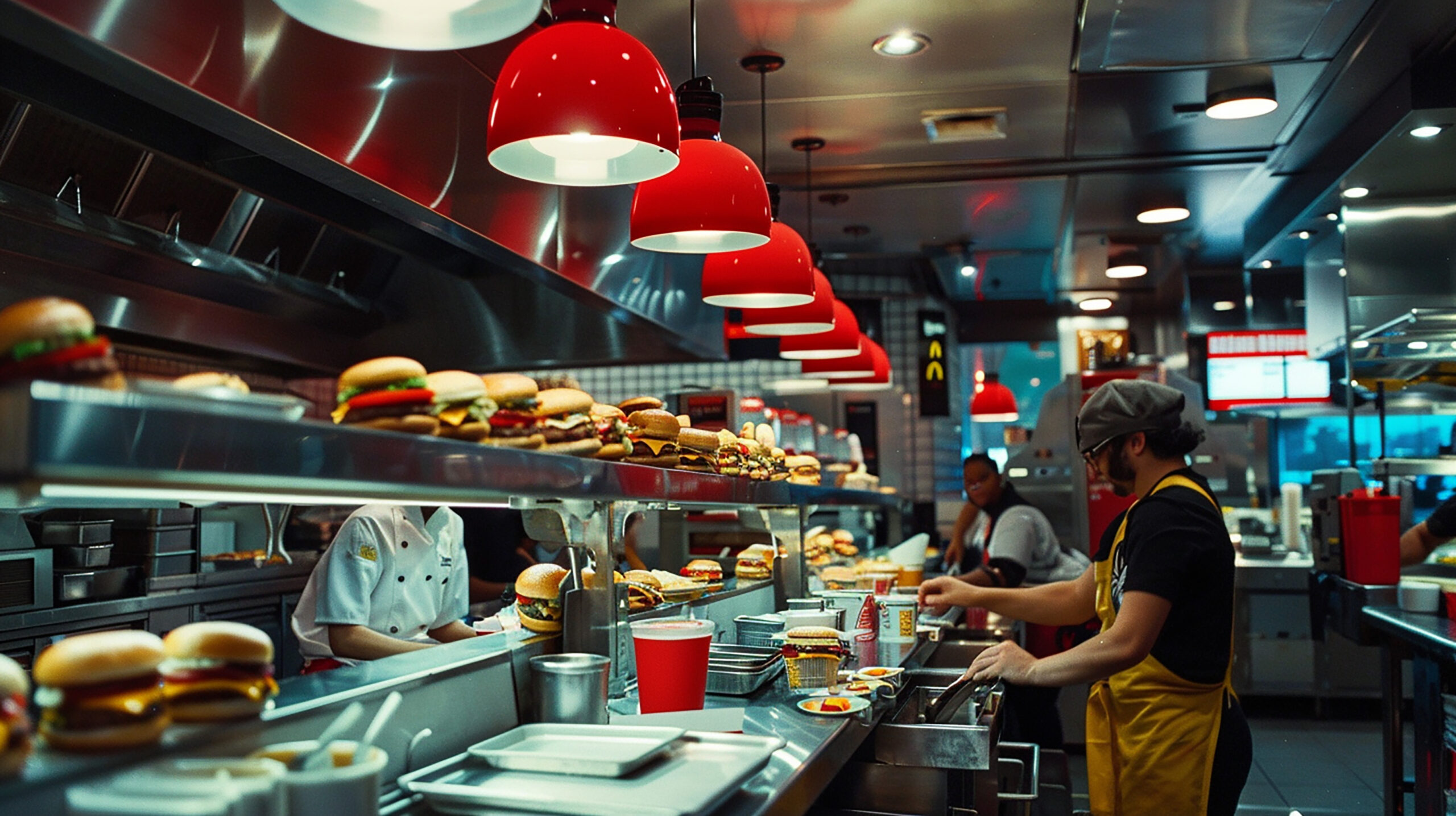
It can be observed that in restaurants, especially fast-food restaurants, comfort and attractive appearance are vital elements that help enhance dining in the establishment. Comfort would begin with seating options which may include cushion booths, high-top tables or bar seating to be able to accommodate customers with different preferences and needs. This will not only be able to accommodate different group sizes but also make customers feel comfortable — whether just catching a quick bite or having a longer meal. Besides, the quality of seating materials used should be durable and easy to clean which is very important in such a place with huge flow of people.
Ambience is what creates the overall atmosphere of dining. Proper lighting is also crucial to make the atmosphere inviting — a mix of bright, functional lighting for visibility alongside softer and ambient lighting for relaxation helps set the right mood. Acoustic design also plays an important role in this regard where noise levels are going to be controlled with sound-absorbing material to offer a pleasant environment for much easier conversation — increasing the level of satisfaction among the customers.
Furthermore, cleanliness and proper tidying up help in generating a positive atmosphere. A clutter-free environment added with visible sanitation stations boosts hygiene and makes the customers feel more at ease. These integrated elements not only enhance comfort for diners but also honour the restaurant’s commitment to a pleasant and enjoyable dining experience — making it a favourite among customers.
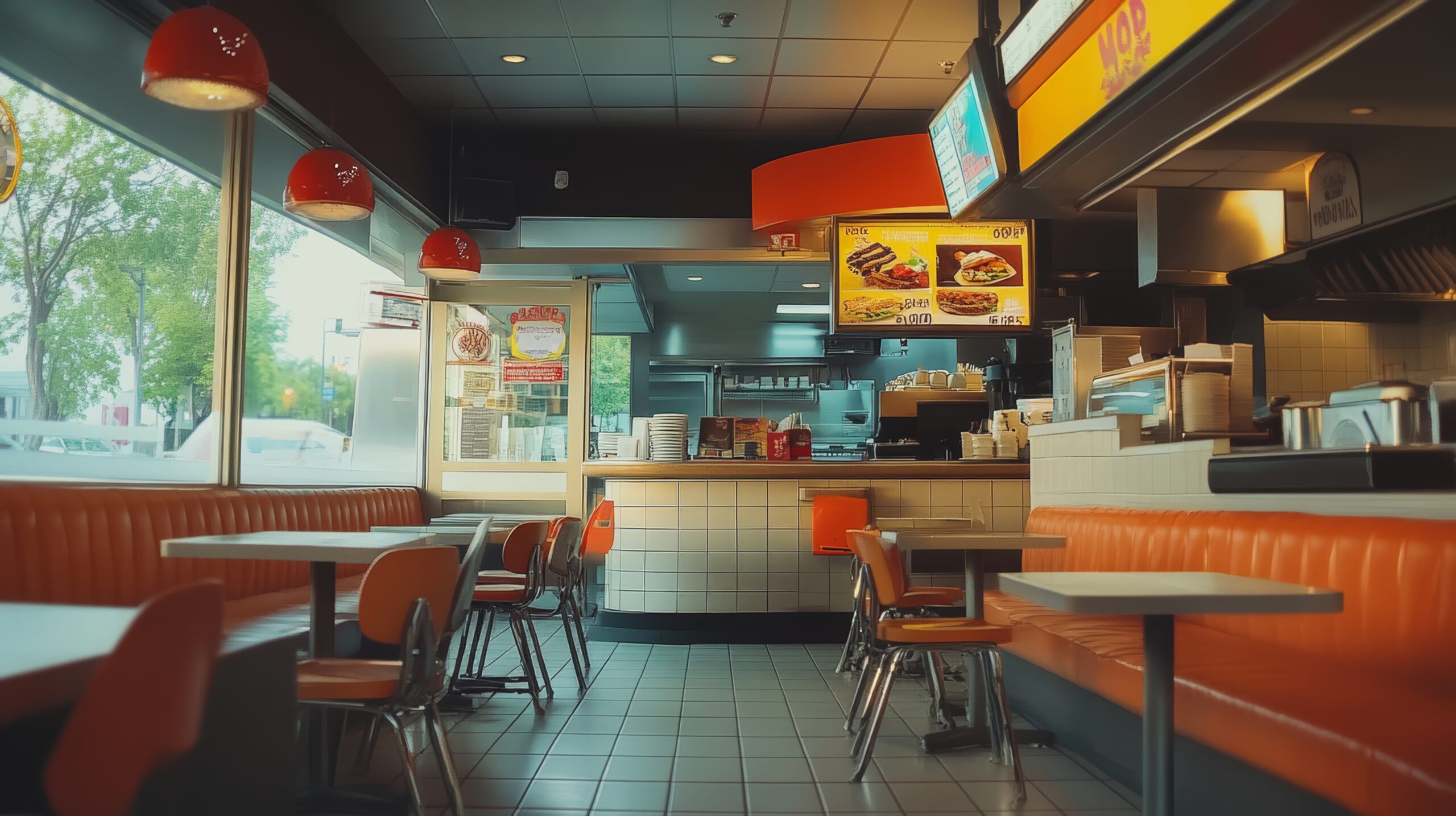
The interior design of fast-food restaurants has to consider health and safety as major concerns since they come in direct contact with customers’ well-being and the efficiency of operations. One of the primary design elements is easily accessible sanitation stations. The installation of hand sanitisers or sinks near the entrance and restrooms will ensure that customers practice hygiene easily to minimise the spread of germs. Apart from this, an open kitchen would further develop transparency and customers’ belief in them. Consumers can see the preparation process of the food and with this design decision, the restaurant underlines their principle of cleanliness and food safety.
Another critical consideration involves the specification of materials and finishes. Specification of smooth, non-porous and easily cleanable materials in both front-of-house and back-of-house will guarantee that high standards of sanitation are maintained and cleaning is facilitated. The floor material must be hard enough to withstand heavy cleaning and heavy usage which frequently occurs. The tables and chairs within the dining space should also have smooth and non-absorbent surfaces to allow regular cleaning.
Other important features of health and safety design include accessibility. Restaurants should strive to provide safe and easy access to all customers especially those with disabilities. Well-designed signage for such places as exits, restrooms and other safety equipment such as fire extinguishers enhances safety and is helpful in the case of an emergency.
With all these health and safety measures incorporated into the interior design, this setting of fast food becomes not only more hygienic and secure but also instills confidence in its customers — adding to the positive and reassuring dining experience.
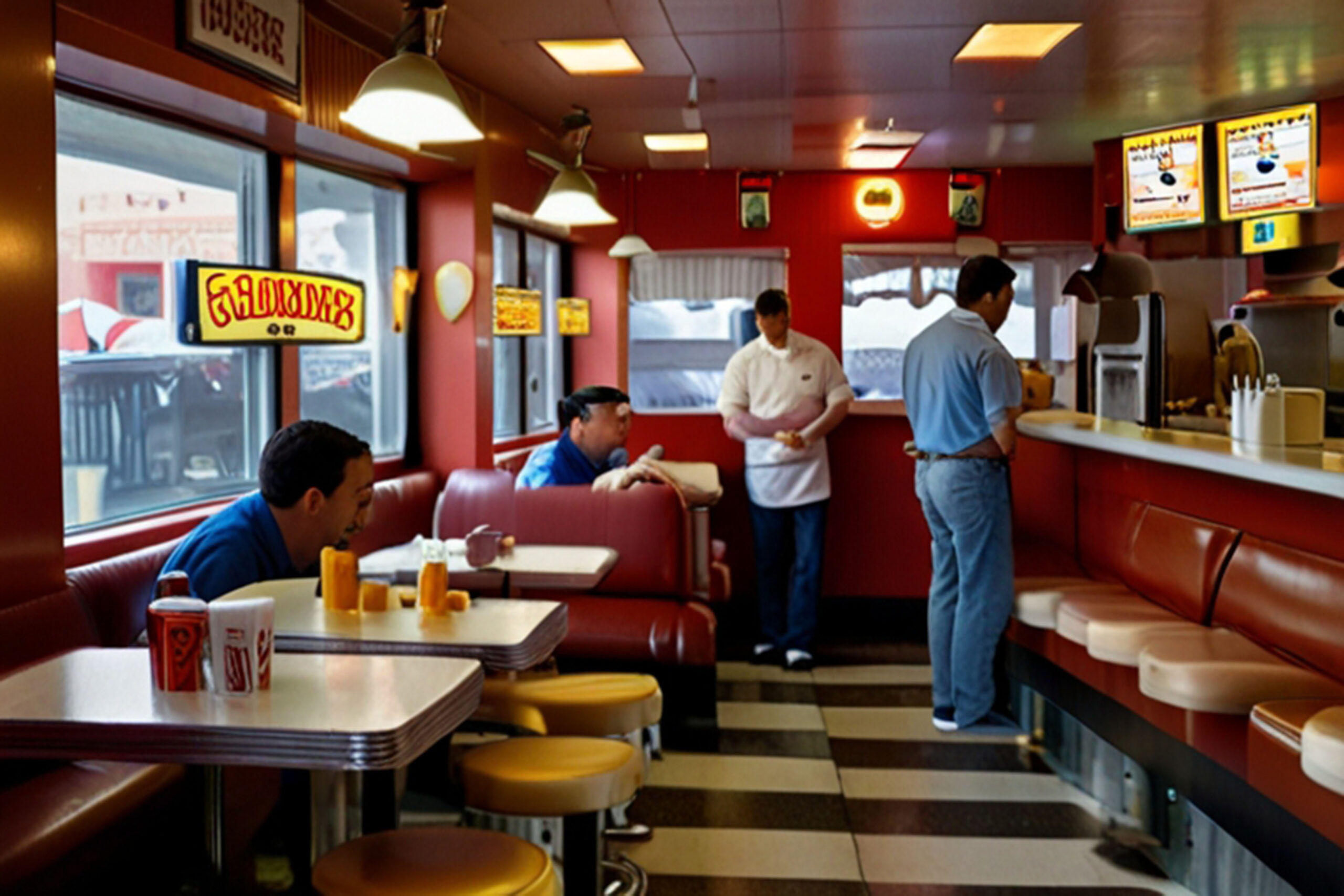
The interior design for fast food should ensure accessibility for comfort and convenience in its dining service to all customers including those with disabilities. An accessible design must first provide adequate width inside the restaurant for wheelchair users. This includes planning wide and clear paths alongside placing furniture so that there are obvious and accessible routes past tables, restrooms and counters where orders are placed. Tables should be the appropriate height to allow for comfortable dining by all customers and provide adequate clearance for wheelchairs.
Other than that, bathroom access is important. Bathrooms should be designed to cater to everyone regardless of ability — among the facilities it provides are grab bars, large stalls and accessible sinks. Installation of automatic door openers or lever-style handles will facilitate entry and exit for those with limited mobility. Accessibility can also be improved through the use of visual and tactile signage. Simple and high-contrast signage with large and easily readable fonts will best facilitate navigation for those with visual impairments. Of course, consideration should also be given to tactile signs with Braille, particularly in main areas such as restrooms and exits.
Ordering spaces should also be designed with accessibility in mind. Counter heights should be comfortable for customers whether they are standing in seated positions — including from a wheelchair. Any self-service kiosks used must be height adjustable or an accessible design to accommodate different user heights and abilities.
With these accessibility features, fast food restaurants are able to meet not only the requirements of the law but also to show a determination for inclusion and customer care. The thoughtful way in which this is done enhances the dining experience for all customers and builds a considerate environment that values the community by showing respect for its diverse needs.
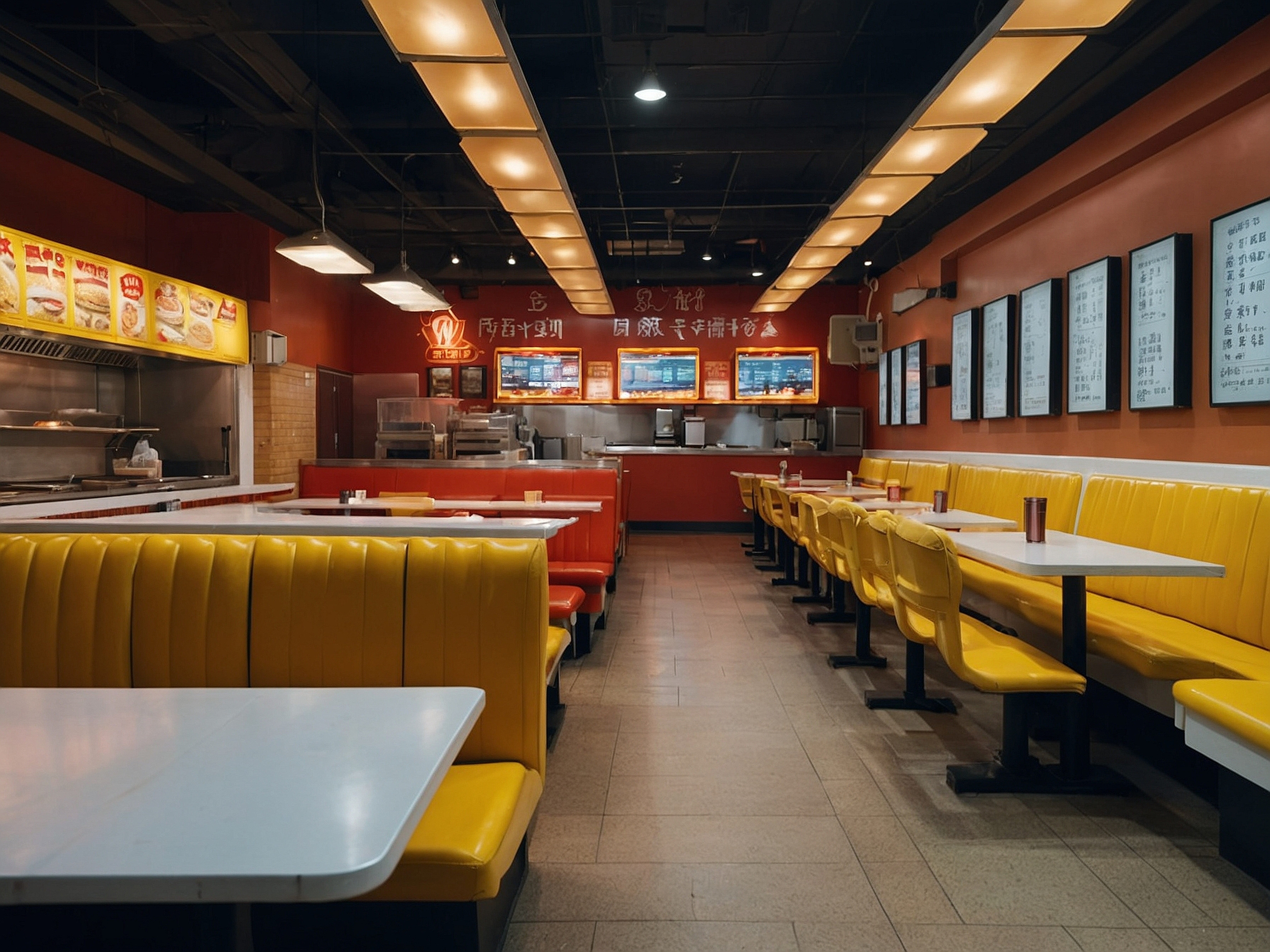
Efficiency in interior design plays a great role in fast food — it will directly affect the speed of service, staff productivity and consequently customer satisfaction. The layout should be highly thought over for an easy flow in the process starting from placing orders to delivering food. For example, placing the ordering counter near the kitchen hastens the preparation of orders while strategically positioned areas for picking up orders prevent congestion and delays. It would also mean that an appropriately designed kitchen would have clear distinction of cooking, assembly and packaging stations while staff would have to travel a minimum distance to perform their tasks smoothly.
Storage solutions also play an important function in operational efficiency — ample storage of ingredients, supplies and other material provides a clutter-free environment for your staff with readily available items. A modular storage system can help to maximise the available space and improve its organisation — allowing for easier management of the restocking of items.
Thoughtful placement of tables and seating in the dining area can help make customers and employees more efficient. Seating placed to accommodate a variety of group sizes with space for manoeuvring avoids congestion and allows employees to clean and reset tables quickly. Clear signage and well-marked pathways on the floor then guide customers through the ordering and dining process without confusion and delay service.
This in itself is amplified by the incorporation of technology. Self-service kiosks would alleviate the time employees take to order while digital menu boards allow for the easy removal and addition of menu items and promotions without necessarily having to physically change them. By incorporating all these elements, fast-food restaurants will actually be able to streamline operations and minimise waiting times — allowing the dining experience to be enhanced and hopefully increased customer satisfaction for a more effective and profitable establishment.
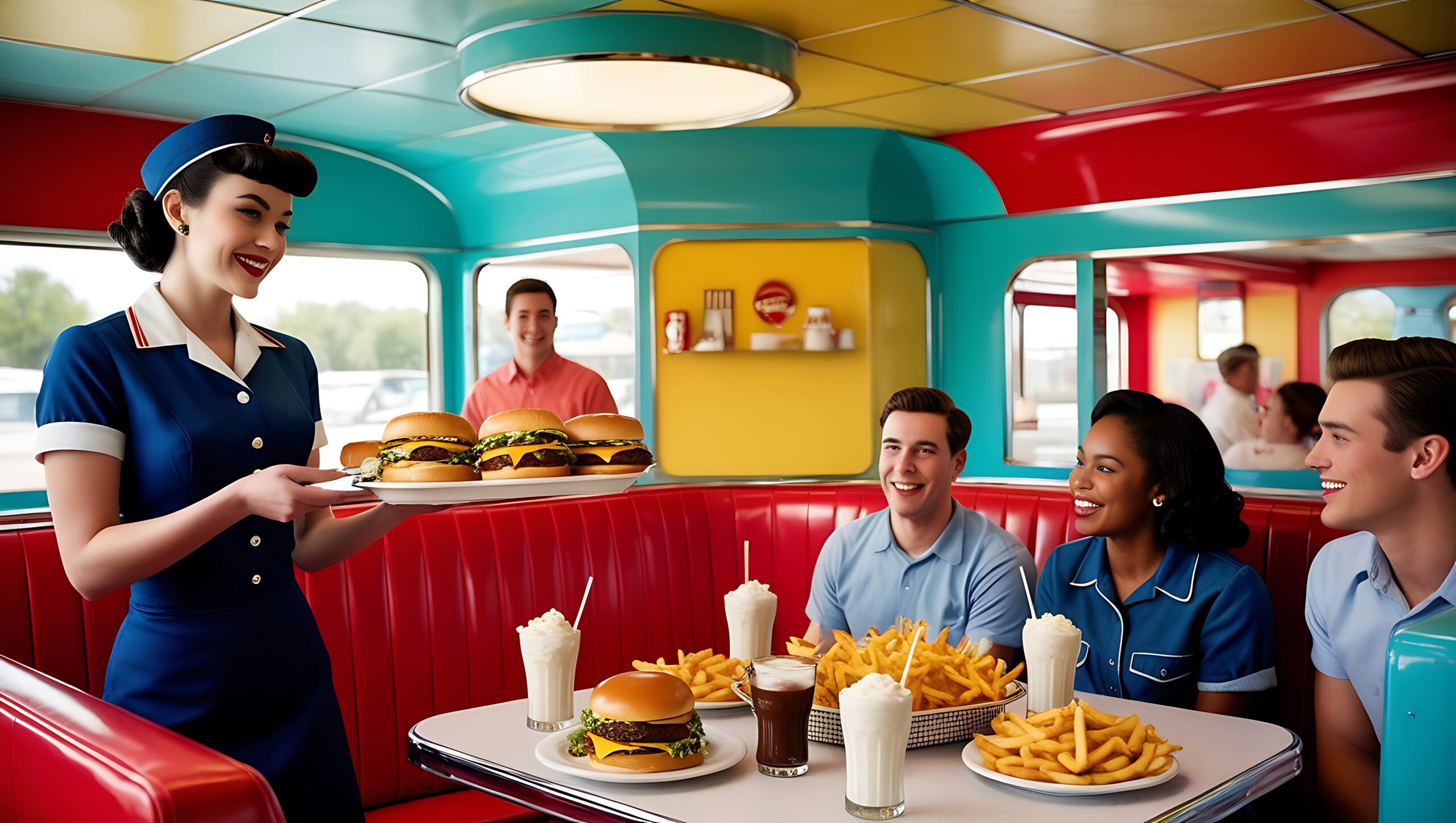
Consistency in the interior branding of fast food restaurants supports and reinforces a brand identity that improves customer recognition and loyalty. The colour scheme inside the restaurant should be as specified by the brand palette in hue which elicits the right emotion and meaning. For example, bright colours such as red and yellow stimulate appetite and could create a dynamic atmosphere within settings of fast food. The colours used consistently in the walls, furniture and decor elements add to the unity of the setting and make it memorable.
This needs to come through with interior design through branding elements such as logos, mascots and taglines. These should be in wall art, signage and even on the staff’s uniforms to help set the concrete of brand identity for a unified customer experience. The design should exude the personality of the brand — whether that is casual and fun, sleek and modern or family-friendly and comforting.
Moreover, the interior of the restaurant and the theme of cuisine should correspond to the overall brand image. For example, a chain of fast-food restaurants positioning with a retro concept would include decorations from vintage or neon signs or even classic diner-type furniture. Such thematic approach not only enhances dining but also fortifies the story of the brand before its potential audience.
Then, there is the integration of brand values in designs. If one of its core values happens to be sustainability, such commitment can be reflected into physical space with eco-friendly material usage or lighting. This harmonisation of the brand message with the environment contributes to more trust and loyalty being built amongst customers.
Overall, smart interior design that maintains brand consistency will mean that every facet of the restaurant is communicating the brand to customers. This in itself leads to brand familiarity and engagement with which customers resonate — helping differentiate this brand in the competitive markets.

Need help with interior design? I-dzine is your answer to it. We are experts in transforming space from virtual to reality. Our expertise in renovation design, oversight, and management ensures that your property is well-designed. We relentlessly focused on delivering meticulously created, beautiful, functional designs.